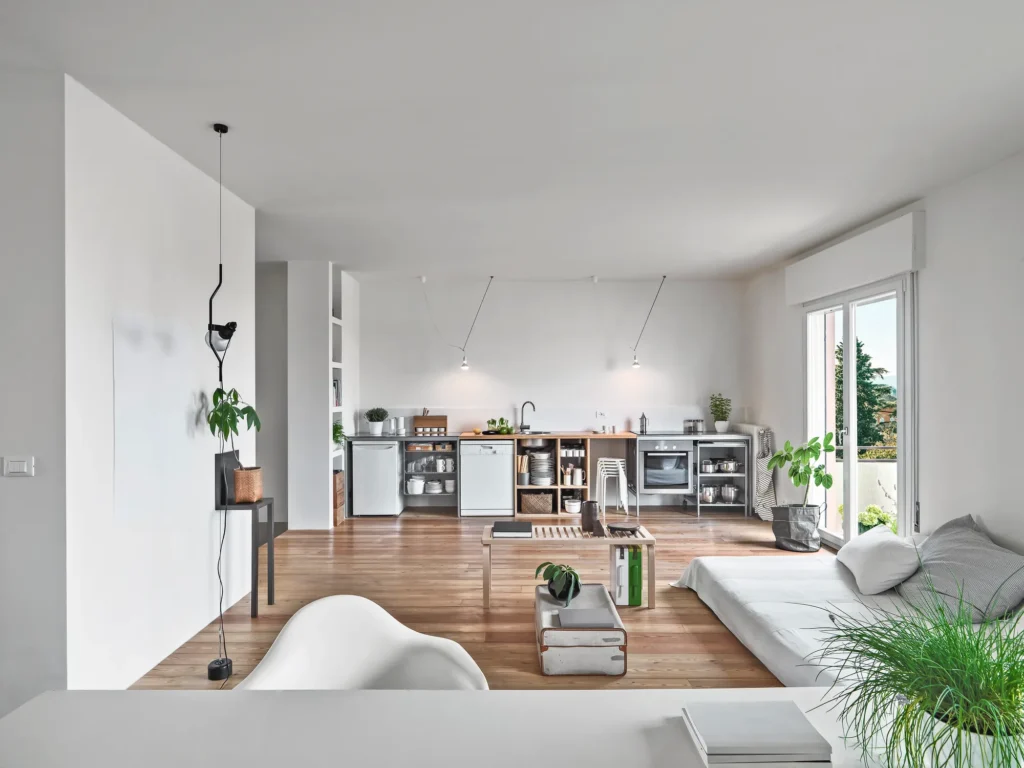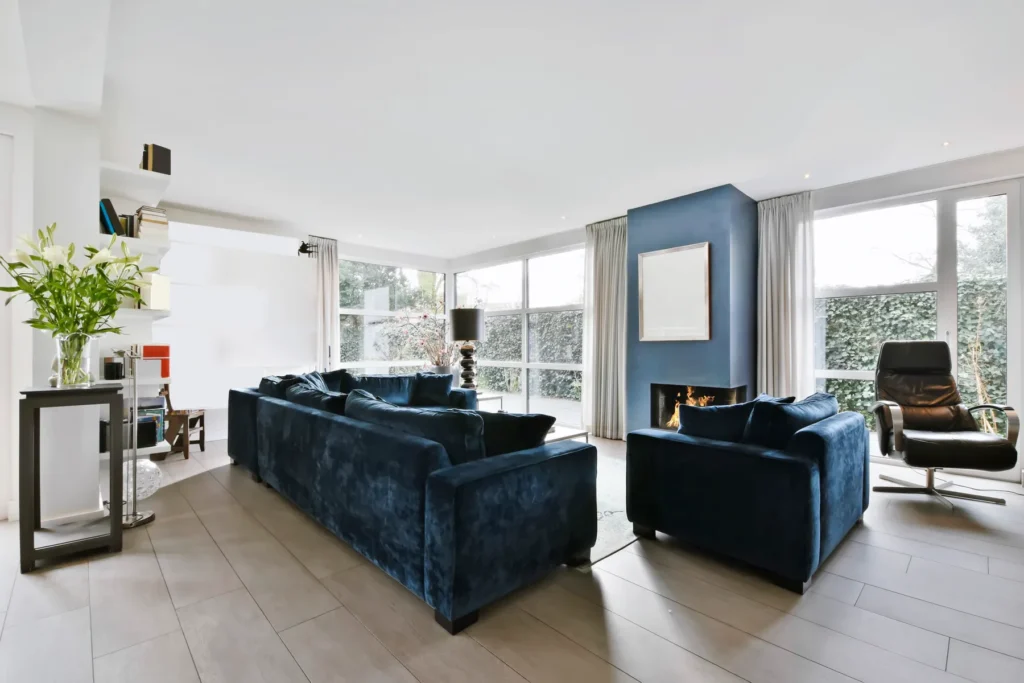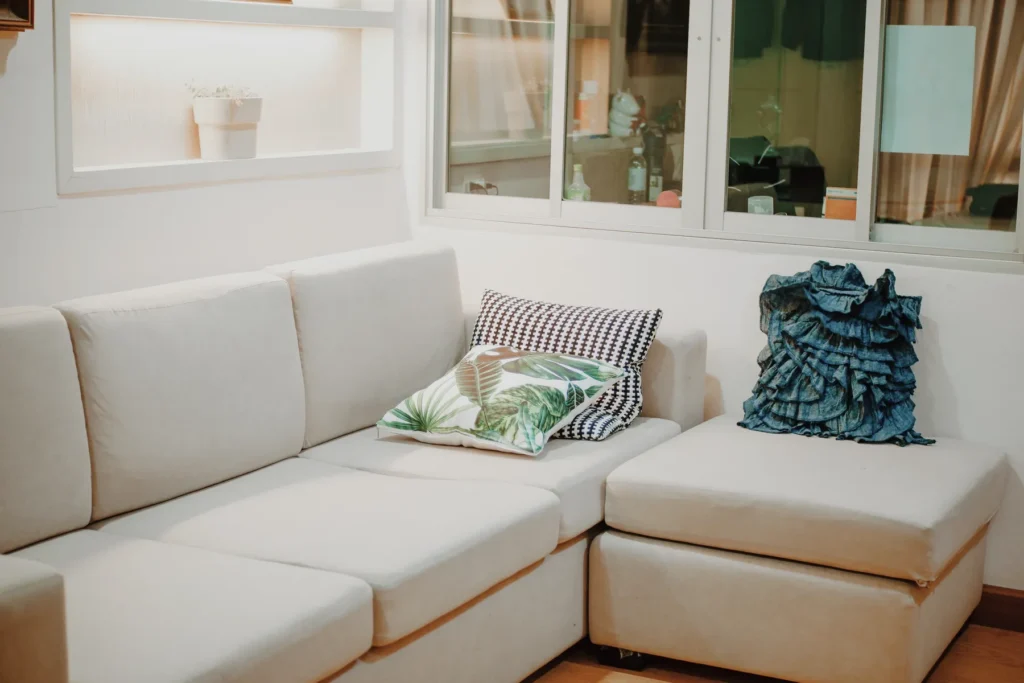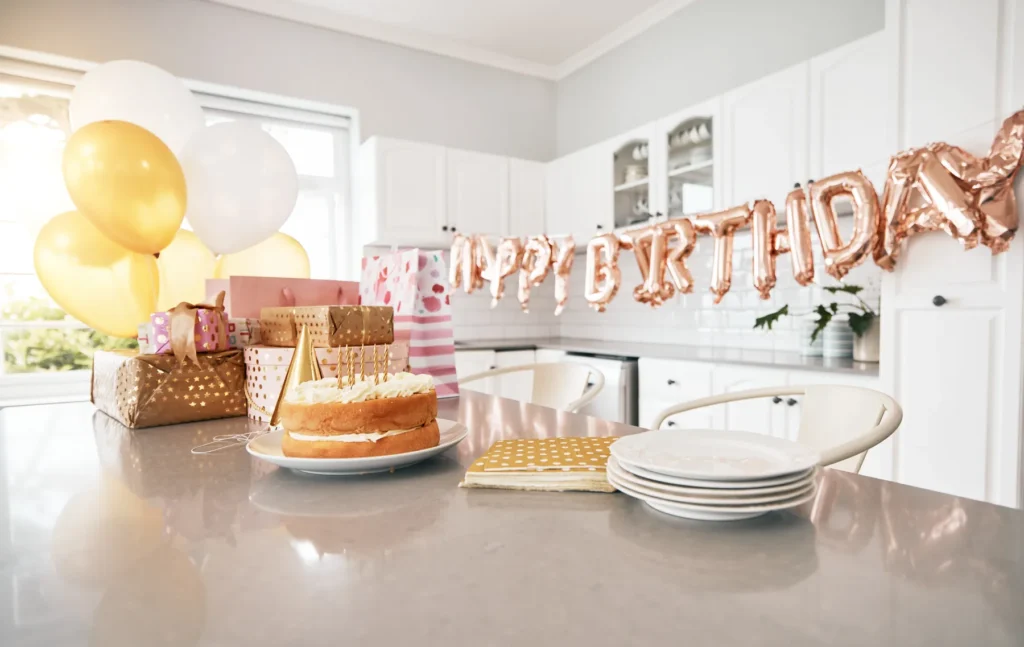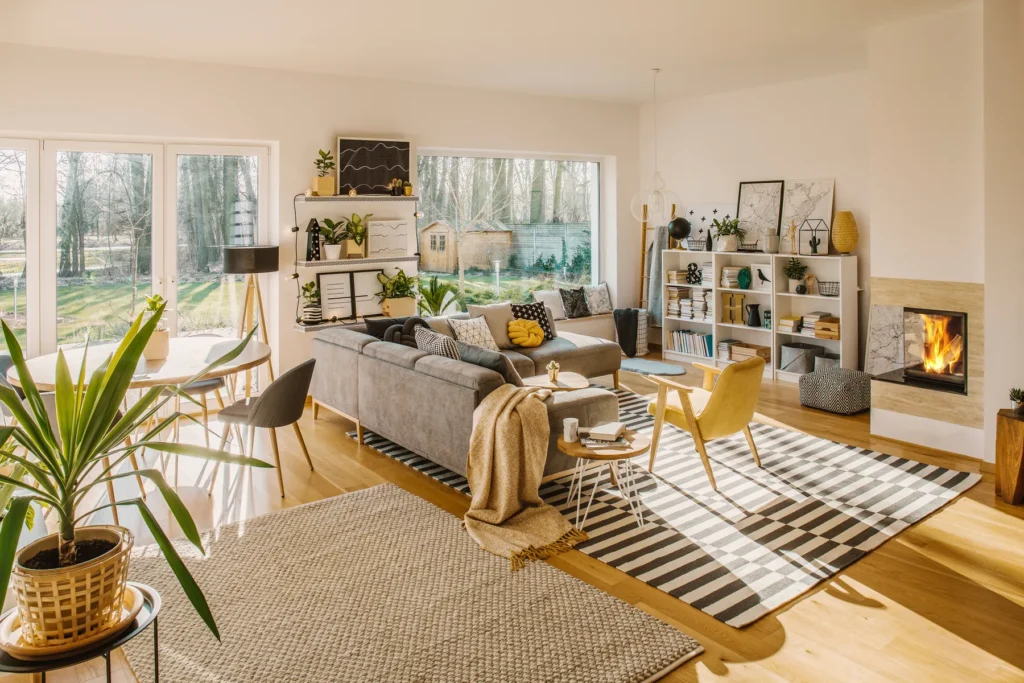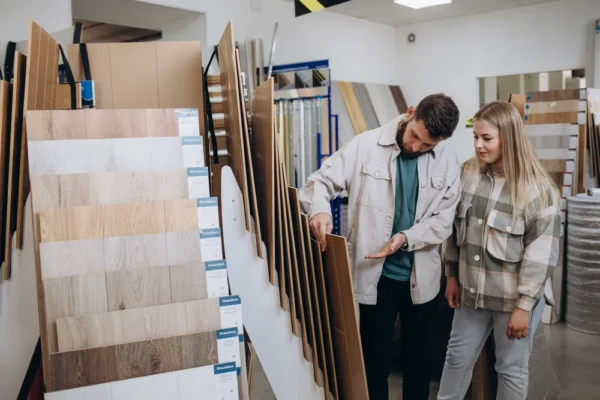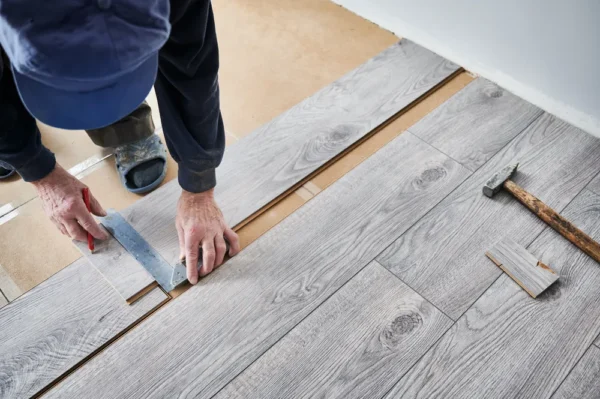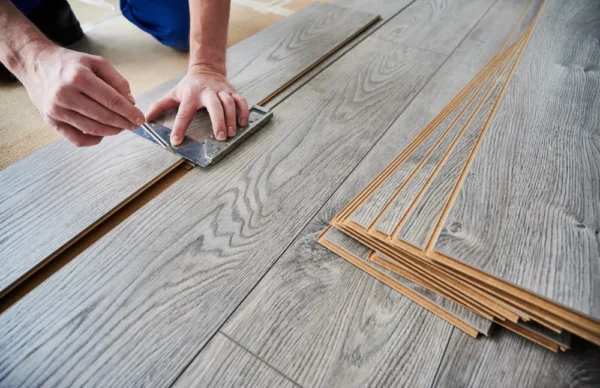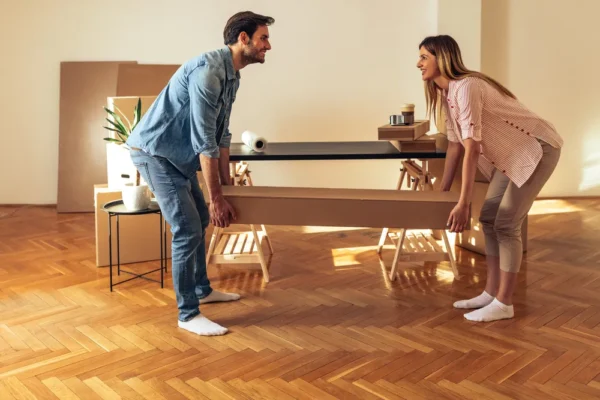Definition and Concept of Open Plan Living
Open plan living refers to integrating various functional areas within a home, typically combining the kitchen, living room, and dining area into one expansive space. This design approach eliminates traditional barriers such as walls and partitions, fostering a seamless flow between different areas of the home.
Read Out Latest Blog on Best Floor Lamps for Living Room.
Importance of Small Open Plan Kitchen Living Room Design
The small open-plan kitchen living room design is especially significant in contemporary living, where space constraints are expected. By merging the kitchen and living areas, homeowners can maximize limited space while creating a multifunctional and sociable environment. This design concept promotes interaction and connectivity, allowing individuals to engage in various activities while remaining within the same space.
Overview of Benefits and Challenges
Benefits:
- Enhanced Social Interaction: Open plan layouts encourage socialization and facilitate communication among family members and guests, as individuals can interact seamlessly across different areas.
- Optimized Space Utilization: Combining the kitchen and living room eliminates redundant walls, maximizing the available floor space and creating a more spacious and airy environment.
- Improved Natural Light and Ventilation: With fewer partitions obstructing the flow of natural light and air, small open-plan layouts tend to feel brighter and more ventilated, enhancing the overall ambiance.
- Flexible Design Possibilities: Open-plan living allows for greater flexibility in design and decor, enabling homeowners to personalize the space according to their preferences and lifestyle requirements.
- More effortless Entertaining: Hosting gatherings and entertaining guests becomes more convenient in an open-plan kitchen living room, as hosts can engage with their guests while preparing meals or drinks.
Challenges:
- Privacy Concerns: The lack of physical barriers in open-plan layouts may raise privacy concerns, particularly in shared living spaces where individuals may desire separation or solitude.
- Noise and Distractions: The absence of walls can increase noise levels and distractions, especially in homes with active kitchens or bustling living areas.
- Cooking Odors and Mess: Cooking smells and kitchen messes may permeate the open plan space, potentially affecting the ambiance of the living area and requiring diligent cleaning routines.
- Challenging Furniture Arrangement: Furnishing an open-plan kitchen and living room requires thoughtful consideration to ensure proper spatial delineation and functional zoning without obstructing traffic flow or visual continuity.
Design Principles for Modern Small Open Plan Kitchen Living Rooms
Space Planning and Zoning
- Define Functional Zones: Divide the open plan space into distinct functional zones for cooking, dining, and relaxation, ensuring clear delineation while maintaining visual continuity.
- Utilize Furniture Placement: Strategically position furniture to delineate different areas within the open plan layout, using rugs, sofas, and dining tables to create boundaries and define zones.
Cohesive Design Elements
- Consistent Material Palette: Maintain visual coherence using consistent materials, colors, and finishes throughout the open plan space, creating a harmonious aesthetic that ties the kitchen and living room together.
- Unified Lighting Scheme: Incorporate cohesive lighting solutions, such as recessed lighting, pendant lights, and wall sconces, to illuminate the entire space uniformly and enhance its visual appeal.
Storage Solutions and Organization
- Maximize Vertical Storage: Optimize storage capacity by utilizing vertical wall space for cabinets, shelves, and storage units, keeping clutter at bay and maximizing floor area for movement.
- Multifunctional Furniture: Invest in multifunctional furniture pieces, such as storage ottomans, nesting tables, and built-in seating with concealed storage, to maximize space efficiency and enhance functionality.
Seamless Integration of Appliances
- Concealed Appliances: Integrate kitchen appliances seamlessly into the cabinetry and design scheme, opting for built-in or panel-ready models to maintain a streamlined aesthetic and minimize visual clutter.
- Space-saving Solutions: Choose compact and space-saving appliances tailored to the dimensions of the small open-plan kitchen living room, prioritizing efficiency and functionality without compromising on performance.
Space Planning and Layout
Assessing Available Space
Before embarking on any design endeavor, assessing the available space thoroughly is crucial. This involves:
- Measuring Dimensions: Accurately measure the room’s dimensions, including length, width, and height, to understand the spatial constraints and possibilities.
- Identifying Architectural Features: Take note of architectural features such as windows, doors, columns, and alcoves, as they can influence layout decisions.
- Analyzing Traffic Flow: Consider how people will move through the space and identify potential bottlenecks or areas of congestion.
Optimizing Layout for Functionality and Flow
Once the available space has been assessed, the next step is to optimize the layout to enhance functionality and flow:
- Creating Activity Zones: Divide the space into distinct activity zones based on functionality, such as cooking, dining, lounging, and work areas.
- Prioritizing Ergonomics: Arrange furniture and fixtures to facilitate ease of movement and ensure ergonomic comfort, considering factors such as seating heights, counter heights, and reach distances.
- Promoting Connectivity: Foster visual and physical connectivity between different space areas to encourage interaction and communication among occupants.
Incorporating Multi-functional Furniture
In small or multi-purpose spaces, incorporating multi-functional furniture is crucial in maximizing utility and flexibility:
- Convertible Solutions: Choose furniture for multiple purposes, such as sofa beds, storage ottomans, and extendable dining tables, to adapt to changing needs and optimize space usage.
- Modular Configurations: Opt for modular furniture systems that can be reconfigured or rearranged to accommodate different activities and spatial arrangements, offering versatility and adaptability.
Utilizing Visual Dividers
Visual dividers play a crucial role in delineating space and creating visual interest without the need for physical barriers:
- Partition Screens: Use decorative screens, curtains, or room dividers to visually separate different zones within an open-plan layout, providing privacy and defining boundaries.
- Area Rugs: Place area rugs strategically to demarcate specific functional areas within the space, adding texture, warmth, and visual definition to the overall design.
- Vertical Elements: Incorporate vertical elements such as shelving units, bookcases, or freestanding partitions to divide space vertically while maintaining an open, airy feel.
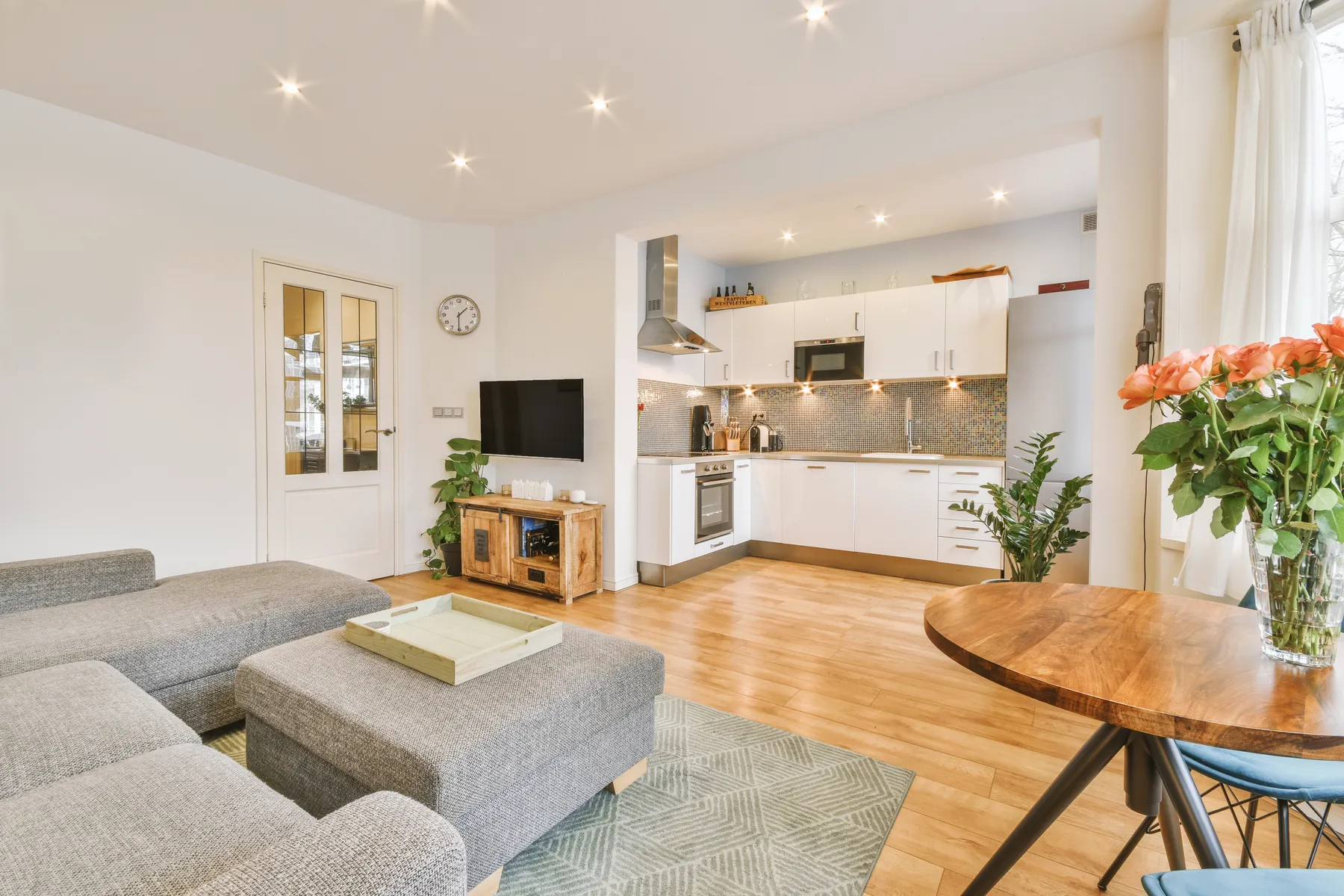
Design Elements
Color Palette Selection
The choice of color palette sets the tone for the entire space and greatly influences its ambiance and visual appeal:
- Harmonious Hues: Select a harmonious color palette that complements the overall design scheme and reflects the desired mood or atmosphere.
- Consider Contrasts: Experiment with contrasts by incorporating complementary or contrasting colors to add visual interest and depth to the space.
- Balance and Cohesion: Strike a balance between light and dark tones, warm and cool hues, and bold and neutral shades to create a cohesive and balanced color scheme.
Lighting Solutions for Ambiance and Task Lighting
Effective lighting solutions are essential for enhancing both the ambiance and functionality of a space:
- Ambient Lighting: Install ambient lighting fixtures, such as overhead or recessed lighting, to provide overall illumination and create a welcoming atmosphere.
- Task Lighting: Incorporate task lighting solutions, such as under-cabinet lights in the kitchen or reading lamps in the living room, to illuminate specific areas and facilitate various activities.
- Accent Lighting: Use accent lighting, such as wall sconces or spotlights, to highlight architectural features, artwork, or decorative elements, adding drama and visual interest to the space.
Materials and Finishes for Durability and Aesthetics
Carefully selecting materials and finishes is crucial for achieving a balance between durability and aesthetics:
- Durable Surfaces: Choose durable materials such as quartz countertops, porcelain tiles, and hardwood floors in high-traffic areas like the kitchen and living room to ensure longevity and ease of maintenance.
- Aesthetic Appeal: Opt for materials and finishes that not only withstand daily wear and tear but also contribute to the space’s overall aesthetic, enhancing its visual appeal and tactile quality.
- Texture and Contrast: Introduce texture and contrast by combining different materials and finishes, such as matte and glossy surfaces or rough and smooth textures, to create visual interest and depth.
Storage Solutions to Maximize Space
In small or compact spaces, practical storage solutions are essential for maximizing space utilization and minimizing clutter:
- Utilize Vertical Space: Maximize vertical storage by incorporating floor-to-ceiling cabinets, shelving units, or wall-mounted organizers to capitalize on unused wall space.
- Hidden Storage: Integrate hidden storage solutions, such as pull-out drawers, concealed cabinets, or built-in storage benches, to maintain a clean and clutter-free aesthetic while maximizing storage capacity.
- Multi-functional Furniture: Choose pieces with built-in storage compartments, such as ottomans with hidden storage or coffee tables with drawers, to optimize space efficiency without sacrificing style or functionality.
Integration of Appliances for Seamless Look
Seamlessly integrating appliances into the design scheme contributes to a cohesive and streamlined aesthetic:
- Built-in Appliances: Opt for built-in or integrated appliances, such as refrigerators, dishwashers, and ovens, to create a seamless look that blends seamlessly with the cabinetry and design scheme.
- Panel-ready Options: Choose panel-ready appliances that allow custom panels to be affixed to match the surrounding cabinetry, ensuring a cohesive and integrated appearance that enhances the space’s overall aesthetic.
- Compact Solutions: Consider compact or space-saving appliances tailored to the dimensions of the space, particularly in small kitchens or open-plan layouts, to optimize space usage without compromising on functionality or style.
Creating Zones within the Space
Defining Kitchen and Living Areas
Layout Considerations: Begin by assessing the space layout to determine the most logical division between the kitchen and living areas. Consider factors such as traffic flow, natural light, and architectural features.
Visual Separation: Use cues such as area rugs, furniture arrangement, and lighting fixtures to delineate the kitchen and living areas. This can help create a sense of distinction while maintaining an open and cohesive feel.
Functional Zones: Within the kitchen area, establish distinct zones for food preparation, cooking, and storage. Incorporate kitchen islands or peninsulas to provide additional workspace and storage while visually separating the kitchen from the living space.
Incorporating Dining Spaces
Space Utilization: Assess the available space to determine the most suitable dining area layout. For smaller spaces, consider space-saving solutions such as foldable tables, built-in banquettes, or wall-mounted drop-leaf tables.
Design Integration: Seamlessly integrate the dining area with the kitchen and living spaces to create a cohesive look. Choose dining furniture that complements the overall aesthetic while providing comfort and functionality.
Ambiance Enhancement: Enhance the ambiance of the dining area with appropriate lighting fixtures, such as pendant lights or chandeliers, to create a warm and inviting atmosphere. Consider incorporating decorative elements like artwork or wall treatments to add visual interest.
Incorporating Flex Spaces for Work or Relaxation
Versatile Furniture: Integrate versatile furniture such as sleeper sofas, convertible desks, or folding screens to create flexible work or relaxation zones. This allows for easy space transformation based on varying needs and activities.
Designated Areas: Designate specific areas within the space for work or relaxation, ensuring they are conducive to concentration or unwinding. Consider natural light, privacy, and ergonomic comfort when designing these zones.
Technology Integration: Incorporate technology solutions such as built-in charging stations, adjustable lighting controls, and soundproofing features to enhance the functionality and comfort of work or relaxation spaces.
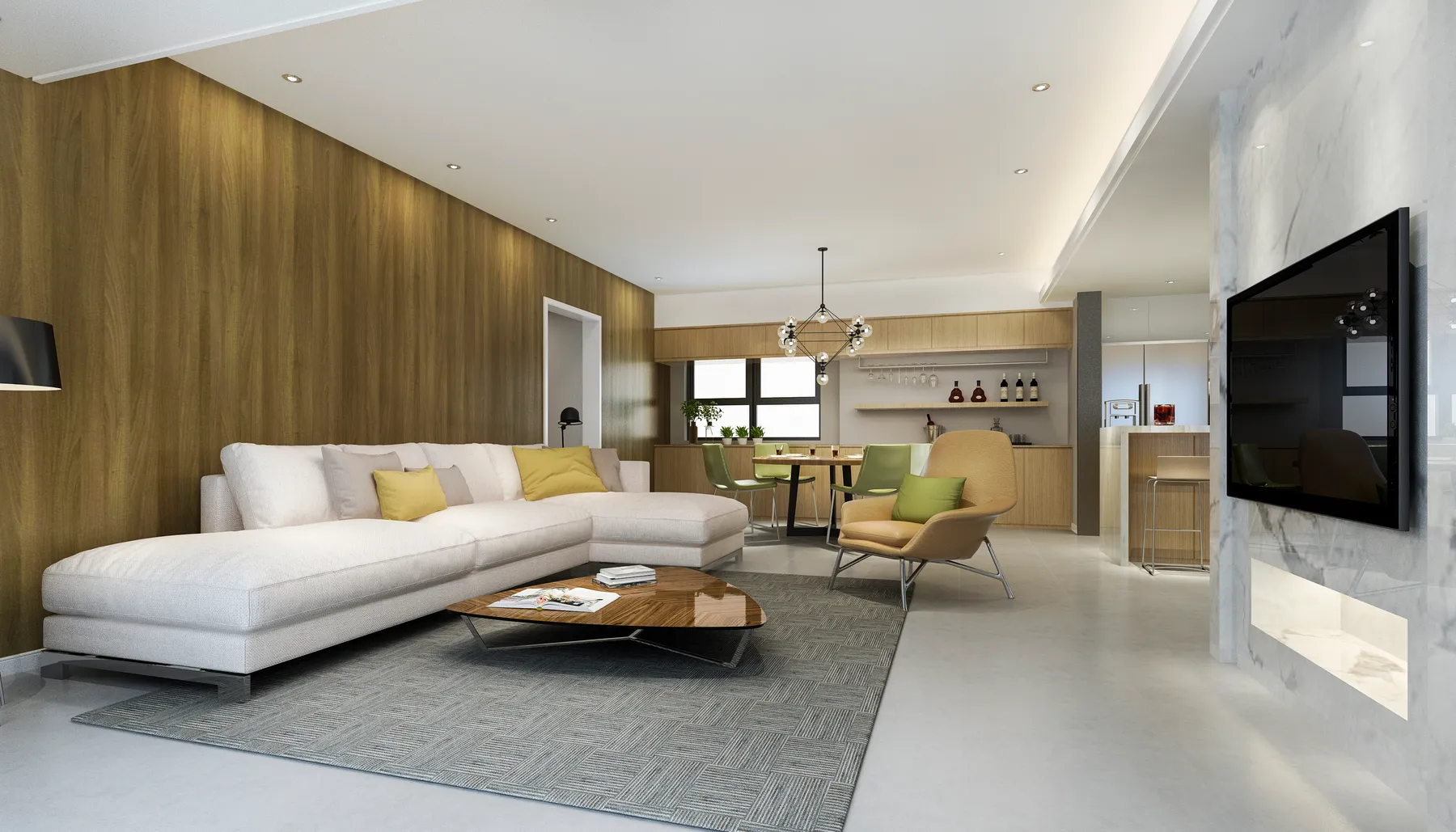
Furniture Selection and Arrangement
Choosing Furniture that Fits Scale and Style
Assessing Scale: Consider the room’s scale and available space when selecting furniture. Choose pieces proportionate to the room’s size to avoid overcrowding or overwhelming the space.
Matching Style: Select furniture that complements the overall style and aesthetic of the room. Whether modern, traditional, or eclectic, cohesive furniture creates a harmonious and visually appealing environment.
Quality over Quantity: Prioritize quality over quantity when selecting furniture pieces. Invest in well-made, durable pieces that withstand the test of time and contribute to the longevity of the space.
Arranging Furniture for Comfort and Accessibility
Consider Traffic Flow: Arrange furniture in a way that promotes smooth traffic flow throughout the room. Ensure there is enough space for people to move around comfortably without obstruction.
Create Conversation Areas: Arrange seating furniture such as sofas, armchairs, and ottomans to create intimate conversation areas. Place seating pieces nearby to facilitate easy conversation and interaction.
Balance and Symmetry: Maintain balance and symmetry when arranging furniture to create a sense of visual harmony. Distribute furniture evenly throughout the room, taking into account focal points such as windows, fireplace, or television.
Incorporating Space-Saving Furniture Designs
Multi-functional Pieces: Opt for multi-functional furniture designs that serve more than one purpose. Examples include sofa beds, storage ottomans, and extendable dining tables, which maximize space efficiency without sacrificing style or comfort.
Modular Furniture Systems: Consider modular furniture systems that can be customized and rearranged to adapt to changing needs and spatial configurations. Modular sofas, shelving units, and storage systems offer versatility and flexibility in small or dynamic spaces.
Wall-Mounted Solutions: Utilize wall-mounted furniture solutions to free up floor space and create a sense of openness. Wall-mounted desks, shelves, and cabinets maximize vertical storage while minimizing visual clutter on the floor.
Maintenance and Sustainability
Easy-to-Clean Surfaces and Materials
- Non-Porous Surfaces: Opt for non-porous materials such as quartz countertops, porcelain tiles, and stainless steel appliances in the kitchen and bathroom. These materials are resistant to stains and moisture, making them easy to clean and maintain.
- Sealed Surfaces: Ensure that porous materials such as natural stone countertops or hardwood floors are properly sealed to prevent stains and water damage. Regular sealing treatments help maintain their appearance and longevity.
- Low-Maintenance Fabrics: Choose upholstery fabrics and window treatments that are easy to clean and maintain. Look for stain-resistant and machine-washable fabrics to simplify cleaning routines and prolong the lifespan of furniture and textiles.
Energy-Efficient Appliances and Lighting
- Energy Star Ratings: Select appliances with Energy Star ratings, which indicate high energy efficiency and lower energy consumption. Energy-efficient appliances reduce utility bills and minimize environmental impact by conserving resources.
- LED Lighting: Replace traditional incandescent bulbs with energy-efficient LED lighting fixtures throughout the home. LED bulbs consume significantly less energy, last longer, and produce less heat, making them an eco-friendly lighting option.
- Intelligent Lighting Controls: Install intelligent lighting systems with programmable timers, motion sensors, and dimming capabilities to optimize energy usage and reduce electricity consumption. Intelligent lighting controls allow homeowners to customize lighting schedules and preferences while minimizing wastage.
Sustainable Material Choices
- Recycled and Reclaimed Materials: Incorporate recycled or reclaimed materials such as reclaimed wood, recycled glass, or salvaged metal in interior finishes and furnishings. These sustainable materials reduce waste and add character and uniqueness to the space.
- Natural and Renewable Resources: Choose materials derived from natural and renewable resources such as bamboo, cork, or wool. These eco-friendly materials are biodegradable, renewable, and often produced using sustainable farming or harvesting practices.
- Low-VOC Products: Use paints, adhesives, and sealants with low volatile organic compound (VOC) content to minimize indoor air pollution and promote better indoor air quality. Low-VOC products are less harmful to human health and the environment than their conventional counterparts.
Conclusion
The provided content highlights modern small open-plan kitchen living rooms, as well as their benefits, challenges, and design principles. It discusses the importance of open-plan living, including its ability to maximize space and foster connectivity. Furthermore, it outlines the benefits of this design approach, such as enhanced social interaction and optimized space utilization, while addressing challenges like privacy concerns and noise management.
The article explores various design elements to create functional and aesthetically pleasing spaces, including space planning, furniture selection, and sustainability considerations. Finally, it emphasizes the importance of maintenance and sustainability practices in enhancing the longevity and eco-friendliness of the space.

